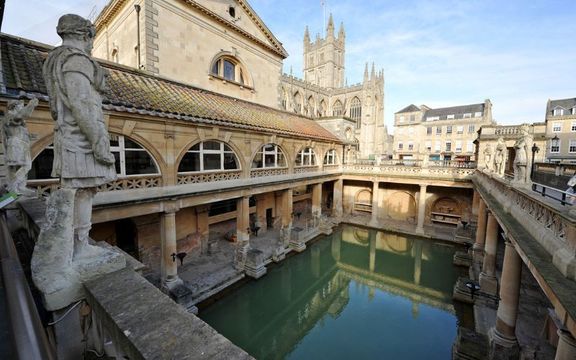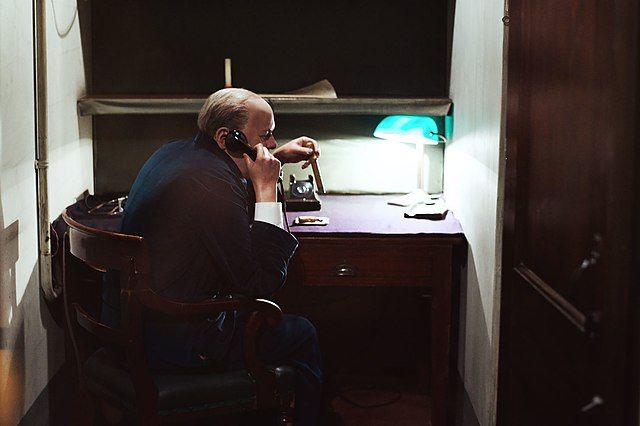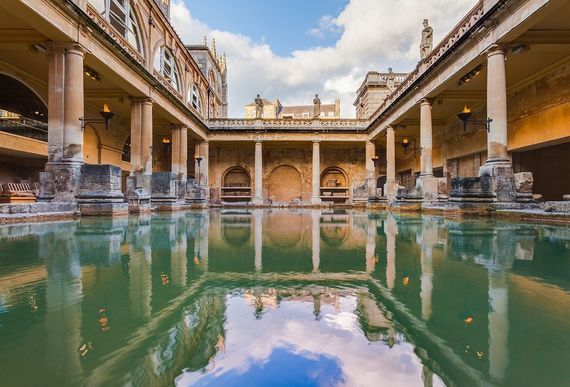
The Ancient Roman Baths in the English city of BathGetty
Our picks of the top five best British Museums you must put on your travel list!
Churchill War Rooms, London
The Map Room in the Churchill Museum and Cabinet War Rooms. Credit: Wikimedia Commons
If you’ve ever found yourself wondering how and where Winston Churchill slept during some of the most fraught moments of the Second World War - then you need to visit the Churchill War Rooms which form part of the Imperial War Museums. Located in a labyrinth of basement offices beneath Whitehall, the Cabinet War Rooms were set up as a base from which senior cabinet officials and Churchill himself could meet, strategise and rest during the war.
Access to the rooms was strictly limited and secrecy was paramount - with staff members often remaining underground for days at a time, working and sleeping in shifts. Visitors to the War Rooms get to visit Churchill’s bedroom, experience the Cabinet Room and see memorabilia from this difficult time in Britain’s history.
For more information, visit iwm.org.uk.
The Roman Baths, Bath
 4
4
The Roman Baths, Bath.

The Roman Baths, Bath.
Experience some of the most well-known artifacts in all of Britain at Bath’s Roman Baths museum which tells the 2,000-year-old history of the city and the baths themselves. The baths themselves were constructed during the first few decades of Roman rule in Britain and were divided into four departments - all aimed at catering locals and European pilgrims visiting the site. Nowadays, the baths are preserved in four different departments, three which are based on the original usage of the building - the Sacred Spring, the Roman Temple, the Roman Bath House, and a newly added museum which holds thousands of artifacts from Roman times. Make sure to visit the gilt bronze head of the goddess Sulis Minerva, which was discovered in 1727 and remains one of the best known objects from Roman Britain.
For more information, visit romanbaths.co.uk
Read more
World Museum, Liverpool
Ideal for younger visitors, the World Museum in Liverpool houses collections and displays of life sciences, earth sciences and human cultures around the world. First opened in 1853, the museum came to life when the 13th Earl of Derby died in 1851 and left his natural history collection to the town of Liverpool. Anxious to find a home for the collection, the good people of Liverpool quickly built a museum close to the docks and put the collection on display. The addition of an aquarium to house the collection in 1857 - the second public aquarium in the world - increased the museum’s popularity and it was soon moved to its current home. Nowadays, the World Museum shows its collections through family-friendly exhibitions covering everything from art to antiquities and social history to scientific discovered.
For more information, visit liverpoolmusuems.org.uk
Kelvingrove Art Gallery and Museum, Glasgow
Located in the trendy West End area of Glasgow, Kelvingrove Art Gallery and Museum is a treasure trove of beauty for locals and visitors alike. Since opening in 1901, the museum’s collection has grown to now include 22 themed, state-of-the-art galleries displaying an astonishing 8000 objects, including the Salvador Dali masterpiece ‘Christ of St John of the Cross’. Younger visitors often prefer to spend time with Sir Roger, a full size Asian elephant who calls the museum home while those interested in history can marvel over the Spitfire LA198 plane hanging from the ceiling of the west court. Kelvingrove is one of Scotland’s largest and most beloved free amenities and is housed in a building that is itself a sight to behold.
For more information, visit glasgowlife.org.uk
Titanic, Belfast
Titanic Museum, Belfast
The iconic Harland and Woolfe cranes that dominate the Belfast skyline are forever associated with the Titanic, so it’s only right that the first-ever visitor experience center dedicated to the ill-fated liner is also located in the city. As well as paying homage to the famous voyager, Titanic Belfast is also home to a number of educational exhibitions that explore Belfast’s history of shipbuilding. Standouts include the SS NOMADIC - which was RMS Titanic's tender ship and remains the last remaining White Star Line vessel in the world and the self-guided tour, which includes over nine interactive galleries which tell the stories of the people and technology behind Titanic.
For more information visit titanicbelfast.com.





Comments